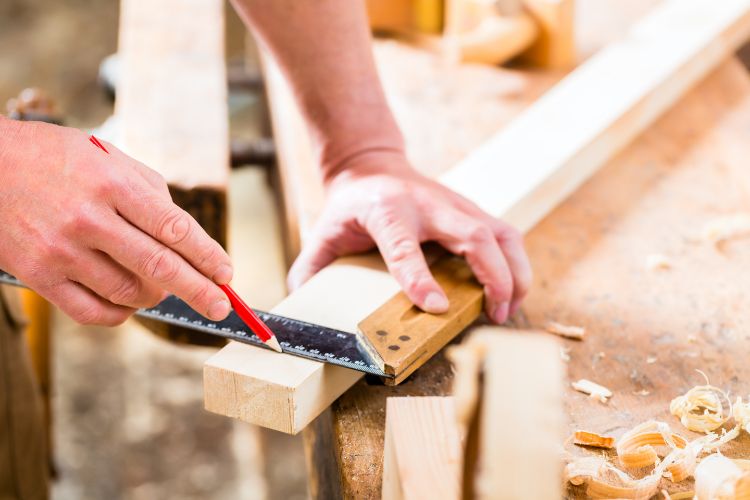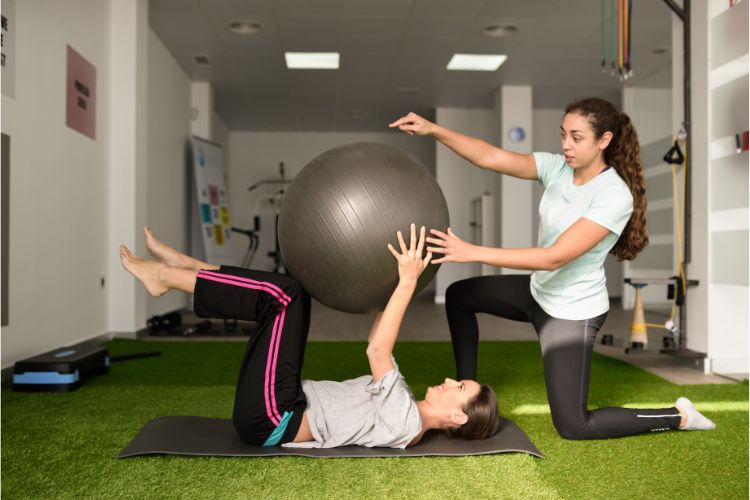Do you learn best by doing, by getting your hands involved? If traditional classrooms feel stifling, but you thrive when building, fixing, or actively engaging, you might be a kinesthetic learner! This hands-on learning style opens doors to exciting and fulfilling career paths. Let’s explore some top careers for kinesthetic learners that let you learn through experience.
What is Kinesthetic Learning?
Kinesthetic learning, also known as tactile learning, is a learning style where individuals learn best through physical experience. Kinesthetic learners understand concepts and retain information most effectively by doing, touching, moving, and interacting with their environment. They often find it challenging to grasp abstract concepts presented solely through reading or listening.
Characteristics of Kinesthetic Learners
Here are some common traits that kinesthetic learners may possess:
- Restlessness: You might have trouble sitting still for long periods.
- Preference for Action: You’d rather jump in and try something new than read instructions or watch someone else do it.
- Love of Building and Creating: You enjoy working with tools, assembling objects, or taking things apart.
- Problem-solving Through Action: You figure things out through trial and error and hands-on experimentation.
- Excellent Spatial Awareness: You have a good sense of body position and coordination.
Understanding Your Strengths as a Kinesthetic Learner
As a kinesthetic learner, you possess a unique set of strengths that can be incredibly valuable in the workplace. Here are a few key areas where you can truly shine:
Problem-Solving: Your hands-on approach and ability to think through challenges by doing make you a natural problem-solver. You excel at troubleshooting technical issues and finding creative solutions.
Helpful Hint:
If you’re ever stuck on a problem, try physically acting it out or building a model to help visualize different approaches.
Kinesthetic Intelligence: Your strong hand-eye coordination and spatial awareness make you adept at tasks requiring physical dexterity and precision. This can be a huge asset in various fields, from surgery to graphic design.
Adaptability: Kinesthetic learners are often quick learners who thrive in dynamic environments. You’re comfortable adapting to new situations and learning new skills through trial and error.
Strong Work Ethic: The hands-on nature of kinesthetic learning often fosters a strong work ethic. You’re not afraid to get your hands dirty and put in the effort to see a project through to completion.
Teamwork and Communication: While kinesthetic learners often excel at working independently, their hands-on approach can also translate well to collaborative settings. You can effectively communicate ideas through demonstrations and practical examples, fostering a strong sense of teamwork.
Is a Traditional Office Job Right for a Kinesthetic Learner?
While some kinesthetic learners may thrive in a traditional office environment, it’s important to acknowledge the potential challenges. Sitting for long periods can be draining, and the lack of physical activity might lead to restlessness and decreased focus.
However, there are ways to make a traditional office job more kinesthetic-friendly. Here are a few tips:
- Stand-up Desk: If possible, consider using a stand-up desk to allow for more movement throughout the day.
- Take Short Breaks for Movement: Schedule short walking breaks or stretches throughout the day to stay energized and focused.
- Fidget Toys: Fidget toys can be a discreet way to channel your energy and improve focus while seated for extended periods.
- Active Meetings: Suggest incorporating movement into meetings, such as walking meetings or brainstorming sessions that involve physical activity.
Even in a traditional office setting, by being mindful of your learning style and taking steps to incorporate movement, you can still thrive as a kinesthetic learner.
Top Career Paths for Kinesthetic Learning Styles
Now that you have a better understanding of your strengths and how to navigate potential challenges in a traditional work environment, let’s delve into some fantastic career paths that are ideal for kinesthetic learners!
Skilled Trades (Construction, Mechanic, Electrician, etc.)

Skilled trade careers are a perfect fit for kinesthetic learners who crave hands-on work and enjoy building and creating things. These professions involve a significant amount of practical application, allowing you to learn by doing and using your strong problem-solving skills.
There’s a wide variety of options within the skilled trades, each with its unique focus. Here are a few examples:
- Construction Workers: From carpenters and plumbers to electricians and welders, construction offers a dynamic and ever-changing environment where you can use your physical skills to build structures and bring blueprints to life.
- Mechanics: If you have a knack for figuring out how things work and enjoy tinkering with engines, a career as a mechanic could be ideal. You’ll diagnose and repair vehicles, using your hands-on skills and problem-solving abilities to keep them running smoothly.
- HVAC Technicians: For those who enjoy working with intricate systems and maintaining a comfortable climate, becoming an HVAC technician could be a great choice. This field involves installing, maintaining, and repairing heating, ventilation, and air conditioning systems.
Stats:
The Bureau of Labor Statistics projects a 10% growth rate for construction jobs and a 4% growth rate for automotive service technicians and mechanics between 2022 and 2032. This indicates a growing demand for skilled workers in these fields.
Helpful Hint:
Many skilled trade professions offer apprenticeships, which allow you to gain valuable hands-on experience while earning a living and learning from experienced professionals.
Healthcare (Physical Therapist, Occupational Therapist, Nursing, etc.)

The healthcare field offers a multitude of rewarding career paths that cater to kinesthetic learners. These professions often involve a significant amount of physical interaction with patients, allowing you to utilize your hands-on skills and problem-solving abilities to make a positive impact on people’s lives.
Here are some healthcare careers to consider:
- Physical Therapist: Physical therapists help patients regain mobility and improve their physical function after injuries or illnesses. This profession requires a strong understanding of the human body, excellent communication skills, and the ability to create personalized treatment plans that involve hands-on therapy techniques.
- Occupational Therapist: Occupational therapists help individuals with physical, developmental, or cognitive challenges regain independence in their daily activities. This field utilizes a hands-on approach, focusing on teaching patients new skills or adapting existing skills to improve their daily lives.
- Nurse: While nursing encompasses a wide range of specialties, many nursing jobs involve a significant amount of hands-on patient care. Nurses provide medical care, assist with daily living activities, and monitor patients’ conditions, all while using their interpersonal and problem-solving skills to ensure patient well-being.
Helpful Hint:
Shadowing healthcare professionals can be a great way to gain firsthand experience and see if a particular career path aligns with your interests and learning style.
Sports and Fitness (Trainer, Coach, Athlete, etc.)

If you have a passion for physical activity and enjoy motivating others, then a career in sports and fitness could be a perfect fit for your kinesthetic learning style. These fields allow you to combine your love of movement with your hands-on approach and strong work ethic.
Here are a few possibilities to consider:
- Personal Trainer: Personal trainers help individuals achieve their fitness goals by creating personalized workout plans and providing guidance and motivation. This role allows you to use your knowledge of exercise science and your hands-on approach to create engaging and effective workout experiences for your clients.
- Coach: Whether you have a passion for a specific sport or enjoy helping people develop their athletic skills in general, coaching can be a fulfilling career path. You’ll use your own experience and knowledge to guide athletes, demonstrate techniques, and motivate them to reach their full potential.
- Athlete: For those with exceptional physical skills and a competitive spirit, a career as a professional athlete could be the ultimate dream job. This path requires intense dedication and training, but the rewards of competing at the highest level can be incredibly satisfying for kinesthetic learners who thrive in physically demanding environments.
Remember: Even if you don’t aspire to become a professional athlete, there are many opportunities to work in sports and fitness without necessarily competing at the highest level. You could become a fitness instructor, sports therapist, or recreation worker, all of which involve a significant degree of physical activity and hands-on interaction.
Entrepreneurship (Starting Your Own Business)
Kinesthetic learners who are driven, resourceful, and enjoy taking initiative can find great success as entrepreneurs. Starting your own business allows you to leverage your hands-on skills and creativity to build something from the ground up.
There are countless possibilities for businesses that cater to your kinesthetic strengths. Here are a few ideas to spark your imagination:
- Skilled Trades Services: If you have expertise in carpentry, plumbing, electrical work, or another skilled trade, you could launch your own contracting business. This path allows you to be your own boss and utilize your hands-on skills to directly serve your clients.
- Fitness or Wellness Business: Your passion for fitness and knowledge of exercise science could translate into a successful fitness studio, personal training service, or even a health and wellness product line.
- Hands-on Product Creation: Are you a skilled craftsperson or enjoy creating unique products with your hands? Explore possibilities like furniture making, jewelry design, or launching an Etsy shop to sell your handcrafted creations.
Remember: Success in entrepreneurship requires not just hands-on skills but also business acumen. Consider taking courses, workshops, or seeking mentorship to develop the business skills needed to thrive as an entrepreneur.
Tips for Finding the Perfect Kinesthetic-Friendly Career
Now that you’ve explored a variety of exciting career paths that cater to kinesthetic learners, here are some practical tips to guide you in finding the perfect fit:
Self-Assessment: What Do You Enjoy Doing?
- Consider your hobbies and interests. What activities do you find most enjoyable and engaging? Do you love tinkering with gadgets, building things, or participating in sports? These preferences can offer valuable clues about potential career paths that align with your learning style.
- Imagine your ideal workday. What kind of environment would energize you? Do you see yourself working outdoors, in a workshop, or in a dynamic, fast-paced setting? Visualizing your ideal work environment can help narrow down your options.
Seek Out Hands-on Internships or Job Shadowing
- Gain practical experience. Internships and job shadowing opportunities can be invaluable for kinesthetic learners. These experiences allow you to test the waters in a particular field, gain hands-on experience, and see if the daily tasks and work environment align with your learning style.
- Network with professionals. Connect with people working in fields that interest you. Talk to them about their careers, the skills they use daily, and the challenges and rewards of their jobs. This can provide valuable insights and help you determine if a particular career path is the right fit for you.
Research, Research, Research!
Once you’ve identified some potential career paths, delve deeper! Research the educational requirements, job outlook, and salary range for these professions. Explore online resources, attend career fairs, and talk to career counselors at your school or local community college.
Remember: There’s no one-size-fits-all answer when it comes to choosing a career. The most important factor is finding a path that aligns with your interests, skills, and learning style. By following these tips and leveraging your strengths as a kinesthetic learner, you can set yourself up for a successful and fulfilling career!
FAQs
* Join clubs or teams: Look for clubs related to hands-on activities like robotics, construction, culinary arts, or sports.
* Volunteer: Volunteering with organizations that involve physical work (like Habitat for Humanity) or hands-on interaction with people can be very insightful.
* Talk to your guidance counselor: They can help identify resources for career exploration and potentially connect you with opportunities for job shadowing.
Wrapping Up
The world needs your hands-on skills, problem-solving abilities, and dynamic energy! If you’re a kinesthetic learner, there are so many top careers that will let you thrive. By understanding your strengths and exploring the wide range of fulfilling career paths that suit your hands-on style, you can build a future that’s both exciting and successful.
Remember, the most important thing is finding a career that aligns with your passions and allows you to learn and grow through doing. Don’t be afraid to experiment, seek out new experiences, and follow the path that feels most engaging and rewarding.
